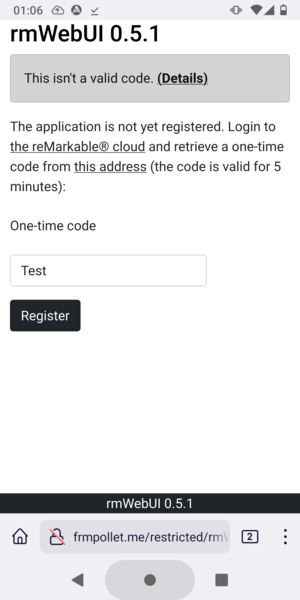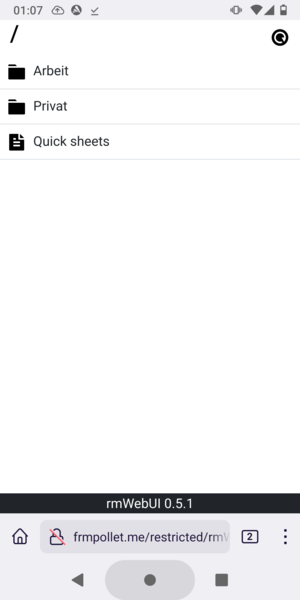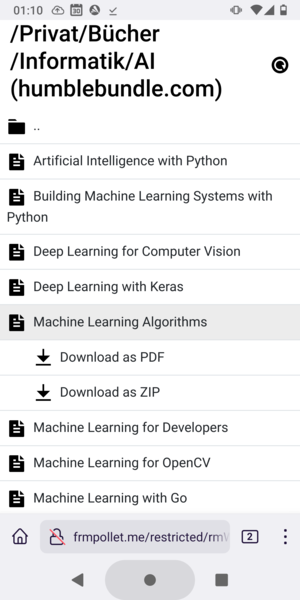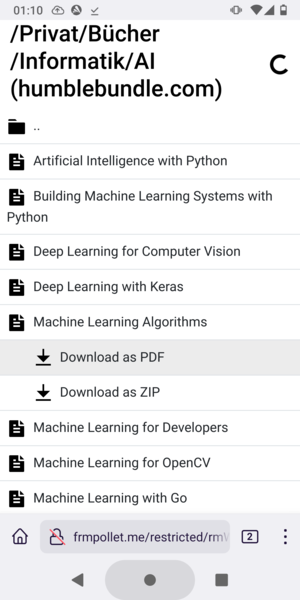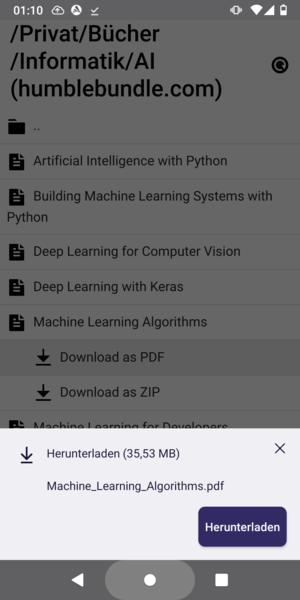rmWebUI is a simple web interface for the reMarkable® cloud designed primarily for small screens. It includes the following features:
- Register application
- Browse collections
- Refresh collections
- Download a document as ZIP (original data)
- Download a document as PDF (convert using rmrl)
- Cache downloaded files based on version. Download from the cloud only as needed.
- Demonstration mode
Run:
composer run deploy
This will create a dist/ folder with all required files.
The file data/config.json contains a few configuration options:
mode: Eitherdebugorprod. In debug mode, PHP error messages will be activated.cache: If true, files will be cached and only downloaded/converted as needed. This will allow faster access but will use space on your webserver.rmrl: By default, notebooks are downloaded as a ZIP file containing the metadata and lines files in the proprietary format of reMarkable®. rmWebUI is also capable of converting the files to PDF by using rmrl. To activate this feature, use this option to specify the command for running rmrl (typically it should bepython -m rmrlorpython3 -m rmrlbut it may differ depending on your system configuration). Be aware that RMRL has limitations and may not work properly with some documents. When this feature is configured, both ZIP and PDF downloads are available.
You need a webserver with PHP 7.2 or further.
If you use RMRL, you also need to install Python 3.7 or further and rmrl. Make sure to install rmrl as either root or the user running the webserver.
Copy the content of the dist/ folder to your webserver and make sure the webserver has write permission to data/.
rmWebUI doesn't implement any kind of authentication. Configure your webserver as needed to prevent unauthorized access, for example by using a .htaccess file (for Apache). Make sure that subdirectories and files are protected as well (especially data/ and data/cache/).
For example, you can put the following .htaccess file into the base directory of rmWebUI:
AuthType Basic
AuthName "rmWebUI"
AuthUserFile /var/www/.htpasswd
Require valid-user
RewriteOptions InheritDown
and create the password file /var/www/.htpasswd.
See the Apache documentation for more information:
On the first run, you will be asked to register the application. This is required to access your files on the reMarkable® cloud. Once the application is registered, you don't need to do it again. You will be asked again if the application fails to connect to the cloud or if you clear the content of the file data/auth.json.
rmWebUI also has a special demonstration mode that can be used to demonstrate the application without access to a reMarkable® cloud account. In this mode, dummy data are returned and rmrl is not used.
To install the demo mode, run composer run demo instead of composer run deploy. The files are created in demo/. You don't need to install rmrl to get PDFs (but you still need to set a value in the configuration to enable the feature). You also don't need write access to data/.
© 2021-2022 Fabien Pollet polletfa@posteo.de
rmWebUI is licensed under the MIT license. See the LICENSE file for details.
reMarkable® is a registered trademark of reMarkable AS. rmWebUI is not affiliated with, or endorsed by, reMarkable AS. The use of “reMarkable” in this work refers to the company’s e-paper tablet product(s).

